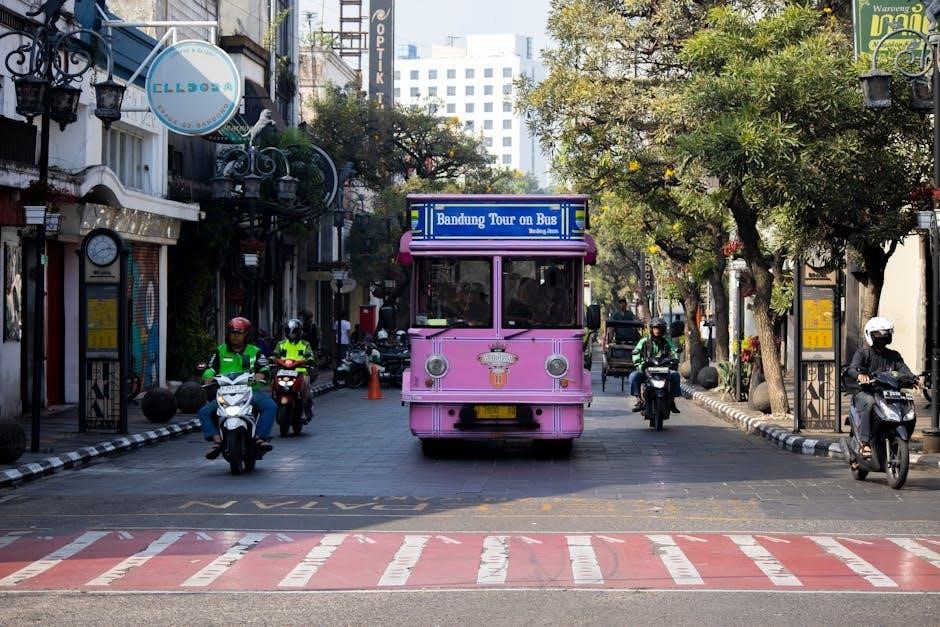
guide to motorbikes
A motorbike, also known as a motorcycle, is a two-wheeled vehicle powered by an internal combustion engine. Popular worldwide for their affordability, fuel efficiency, and agility, motorbikes offer a thrilling way to explore roads, commute, or adventure off-road. With various styles and purposes, they provide freedom and versatility for riders of all levels.
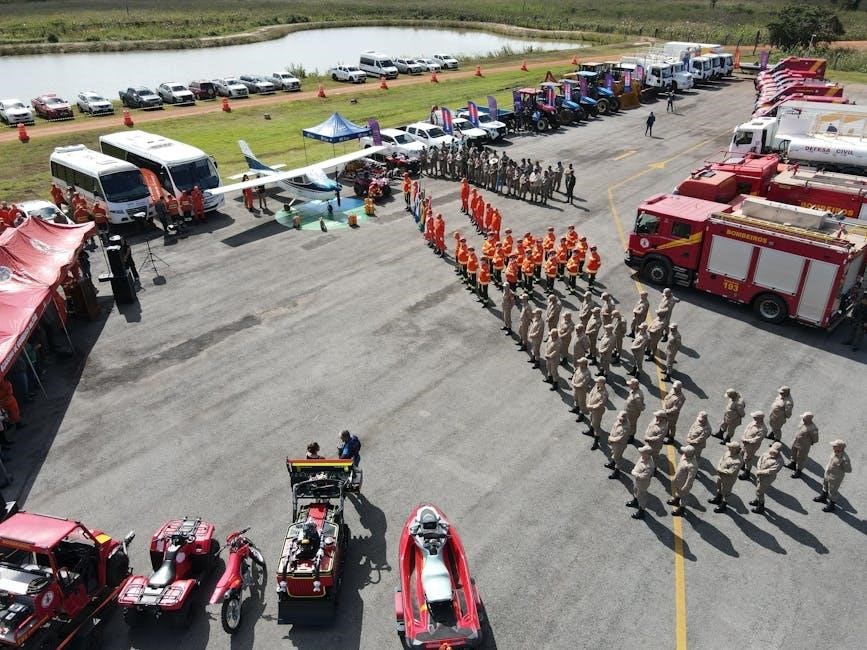
1.1 What is a Motorbike?
A motorbike, or motorcycle, is a two-wheeled vehicle powered by an internal combustion engine. It typically features a lightweight frame, fuel-efficient design, and a manual or automatic transmission. Motorbikes are designed for speed, agility, and versatility, making them popular for commuting, recreation, and adventure. They range from small, fuel-efficient models to powerful, high-performance bikes. Motorbikes are categorized by their engine size, design, and intended use, such as cruisers, sport bikes, touring bikes, and off-road models. Their compact size and maneuverability offer unique advantages over cars, including lower fuel costs and easier parking. For many, motorbikes represent freedom, excitement, and a connection to the open road.

1.2 History of Motorbikes
The history of motorbikes began in the late 19th century with the invention of the first petrol-powered two-wheeler, the Daimler Reitwagen, in 1885 by Gottlieb Daimler and Wilhelm Maybach. This pioneering vehicle laid the foundation for modern motorcycles. In the early 20th century, companies like Harley-Davidson and Indian Motorcycle started mass-producing bikes, popularizing them for both transportation and recreation. The 1960s saw the rise of Japanese manufacturers such as Honda, Yamaha, Suzuki, and Kawasaki, who introduced lightweight, durable, and affordable motorbikes that revolutionized the industry. Over time, motorbikes have evolved to cater to diverse needs, from high-speed racing to long-distance touring and off-road adventures, becoming a symbol of freedom and adventure for millions worldwide.
1.3 Benefits of Owning a Motorbike
Owning a motorbike offers numerous benefits, including cost-effectiveness, convenience, and a sense of freedom. Motorbikes are generally more affordable to purchase and maintain than cars, with lower fuel consumption and reduced parking costs. They are ideal for commuting in urban areas due to their ability to navigate through traffic congestion. Additionally, motorbikes require less storage space and often have lower insurance premiums. For many, riding a motorbike is a thrilling experience that fosters a connection with the environment and provides a sense of adventure. It also encourages a stronger sense of community among riders, with many joining clubs or groups to share experiences and tips. Overall, motorbikes offer a practical yet exhilarating mode of transportation for those who embrace the open road.
Types of Motorbikes
Motorbikes vary widely, catering to diverse preferences and purposes. From sleek sport bikes to rugged off-road models, each type offers unique features tailored to specific riding styles and terrains.
2.1 Cruiser Motorbikes
Cruiser motorbikes are designed for comfort and style, often featuring low-slung seats, relaxed handlebars, and a laid-back riding position. They typically have large engines, chrome accents, and a classic, retro aesthetic. These bikes are ideal for long-distance touring or casual rides, emphasizing comfort over speed. Popular brands like Harley-Davidson and Indian Motorcycle are synonymous with cruisers. They often come with features like large windshields, saddlebags, and passenger seats, making them perfect for cross-country trips. Cruisers are favored by riders who enjoy a relaxed, enjoyable journey rather than high-performance riding; Their sturdy construction and smooth power delivery make them a great choice for both beginners and experienced riders looking to unwind on the open road.
2.2 Sport Bikes
Sport bikes are high-performance motorcycles designed for speed, agility, and racing. They typically feature aerodynamic fairings, lightweight materials, and powerful engines. These bikes are built for experienced riders who enjoy the thrill of acceleration and sharp handling. Sport bikes often have a more aggressive riding position, with clip-on handlebars and rear-set foot pegs, which enhance control during high-speed maneuvers. They are equipped with advanced suspension systems and braking technology to deliver superior performance on both racetracks and twisty roads. While they may lack the comfort of cruiser bikes, sport bikes are ideal for riders seeking adrenaline and precision. Their sleek designs and cutting-edge technology make them a favorite among enthusiasts who prioritize performance above all else.
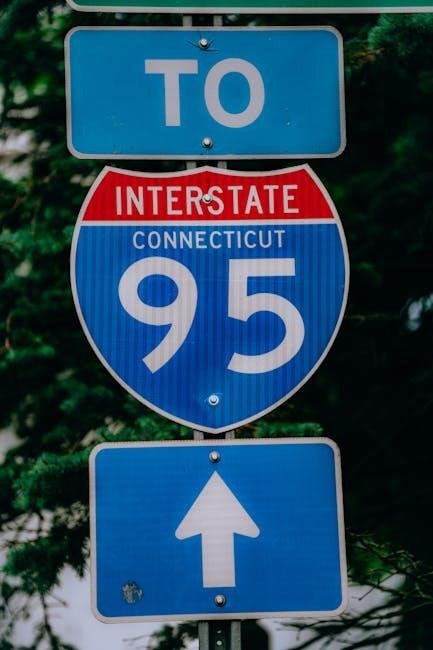
2.3 Touring Motorbikes
Touring motorbikes are designed for long-distance travel, offering comfort and practicality for riders who enjoy exploring vast landscapes. These bikes typically feature large fairings, windshields, and ample storage compartments to accommodate luggage. They are built with ergonomic seating and adjustable components to reduce fatigue during extended trips. Touring bikes often come equipped with powerful engines, smooth transmissions, and advanced suspension systems to handle heavy loads and varying road conditions. Popular among adventure seekers and travelers, these motorbikes provide a balance of performance and comfort, making them ideal for cross-country journeys. Many models also include features like built-in GPS, heated grips, and high-capacity fuel tanks to enhance the touring experience.
2.4 Off-Road and Dual-Sport Motorbikes
Off-road and dual-sport motorbikes are designed for adventurous riders who seek thrilling experiences beyond paved roads. Off-road bikes are built for challenging terrains like dirt, mud, and trails, featuring lightweight frames, knobby tires, and high ground clearance. They are often used for racing, stunt riding, or exploring rugged landscapes. Dual-sport motorbikes, on the other hand, combine the versatility of off-road bikes with the practicality of street bikes. These bikes are equipped with features like long-travel suspension, durable construction, and multi-purpose tires, allowing riders to seamlessly transition between on-road commuting and off-road adventures. Both types are popular among enthusiasts who crave excitement and the freedom to explore diverse environments.

Guide to Buying a Motorbike
Buying a motorbike involves setting a budget, researching models, test riding, and ensuring proper insurance coverage. Prioritize needs over wants for the best decision.
3.1 Budgeting for a Motorbike
Budgeting for a motorbike requires careful consideration of upfront costs, ongoing expenses, and future financial commitments. Start by determining your total available budget, including savings and financing options. Consider the purchase price of the motorbike, which varies widely depending on the type and brand. Additional costs such as insurance, road taxes, and safety gear should also be factored in. Maintenance and fuel expenses are ongoing, so allocate a portion of your budget for regular servicing and fuel. Financing options may be necessary, but be mindful of interest rates and repayment terms. Create a detailed financial plan to ensure affordability and avoid financial strain. Proper budgeting ensures a stress-free ownership experience. Always prioritize essential expenses over optional upgrades. By carefully managing your finances, you can enjoy the freedom of motorbike ownership without compromising your financial stability. Planning ahead and sticking to your budget will help you make the most of your investment. Additionally, consider setting aside a small emergency fund for unexpected repairs or maintenance needs. This comprehensive approach ensures that you are well-prepared for the responsibilities that come with owning a motorbike. Remember, a well-planned budget not only safeguards your finances but also enhances your overall riding experience. Always review and adjust your budget periodically to accommodate any changes in your financial situation or riding habits. This proactive approach will help you maintain a balance between enjoying your motorbike and managing your expenses effectively. In conclusion, budgeting for a motorbike is a crucial step that requires thorough planning and ongoing management to ensure long-term satisfaction and financial health. By taking the time to assess your needs and resources, you can make informed decisions that align with your lifestyle and budget. This careful planning will allow you to fully embrace the joys of motorbike ownership while maintaining financial stability. Always keep your budget flexible to adapt to any unforeseen circumstances, ensuring that your motorbike remains a source of pleasure rather than a financial burden.

3.2 Choosing the Right Motorbike for Your Needs
Choosing the right motorbike involves understanding your riding purpose, lifestyle, and skill level. Consider whether you’ll use it for daily commuting, long-distance touring, or off-road adventures. Cruiser bikes are ideal for relaxed rides, while sport bikes offer agility for thrill-seekers. Touring motorbikes are designed for comfort over long distances, and dual-sport bikes combine on-road and off-road capabilities. New riders should opt for bikes with lower engine sizes (under 600cc) and manageable weight for better control. Test riding helps ensure comfort and suitability. Prioritize safety features and ergonomics. Additionally, think about maintenance costs and fuel efficiency. For beginners, starting with a less powerful bike is advisable to build confidence and skills. Always match your choice to your experience level and intended use to ensure an enjoyable and safe riding experience.
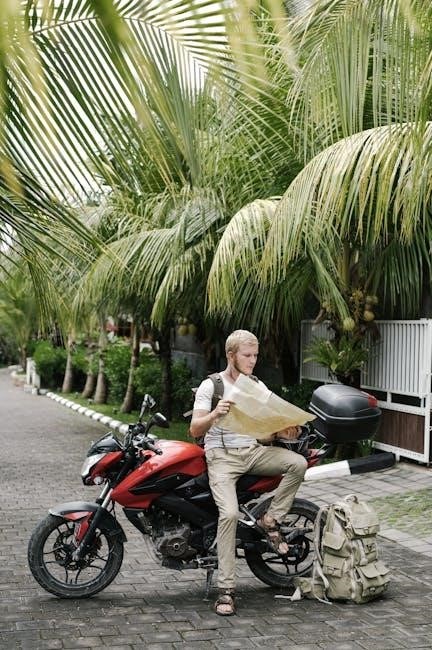
3.3 Test Riding a Motorbike
A test ride is essential to determine if a motorbike suits your needs and preferences. Before starting, inspect the bike for any damage or issues. Familiarize yourself with the controls and ensure the seat height and ergonomics feel comfortable. Start with a slow ride to assess handling, braking, and acceleration. Pay attention to how the bike responds to your inputs and whether it feels balanced. Listen for unusual noises or vibrations. After the ride, check for any signs of wear or malfunction. Test riding allows you to evaluate comfort, performance, and reliability firsthand, helping you make an informed decision. Always wear safety gear and take your time to thoroughly assess the bike.
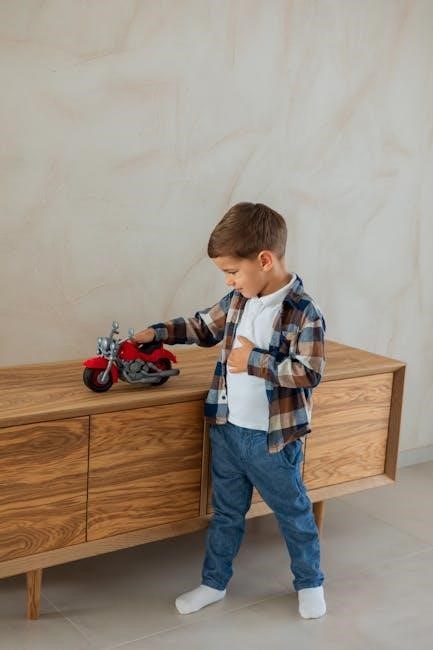
Motorbike Safety Tips
Always wear protective gear, including a helmet, gloves, and sturdy footwear. Stay alert, follow traffic rules, and maintain a safe distance from other vehicles to minimize risks.
4.1 Essential Safety Gear
Essential safety gear for motorbike riders includes a helmet, gloves, and sturdy footwear. A full-face helmet provides the best protection, while modular helmets offer versatility. Durable gloves with padding protect hands, and reinforced boots prevent ankle injuries. Consider wearing protective clothing made of abrasion-resistant materials like leather or Kevlar, with built-in armor at shoulders, elbows, and knees. Eye protection, such as goggles or a face shield, is crucial to avoid debris. Additionally, reflective gear enhances visibility, especially at night. Always ensure gear fits properly and meets safety standards to maximize protection in case of an accident. Prioritizing quality equipment significantly reduces injury risks for riders of all experience levels.
4.2 Safe Riding Practices
Safe riding practices are essential for minimizing risks on the road. Always maintain a safe distance from other vehicles to allow time to react. Be aware of your surroundings, including potential hazards like potholes or debris. Follow traffic rules strictly, such as signaling before turning or changing lanes. Avoid distractions like using a phone while riding. Regularly check your motorbike’s condition, including tire pressure, brakes, and lights, before each ride. Position yourself in the lane where you are most visible to other drivers. Stay alert and anticipate the actions of other road users. In emergencies, remain calm and follow proper braking techniques. Consistent adherence to these practices reduces accident risks and enhances overall control while riding.
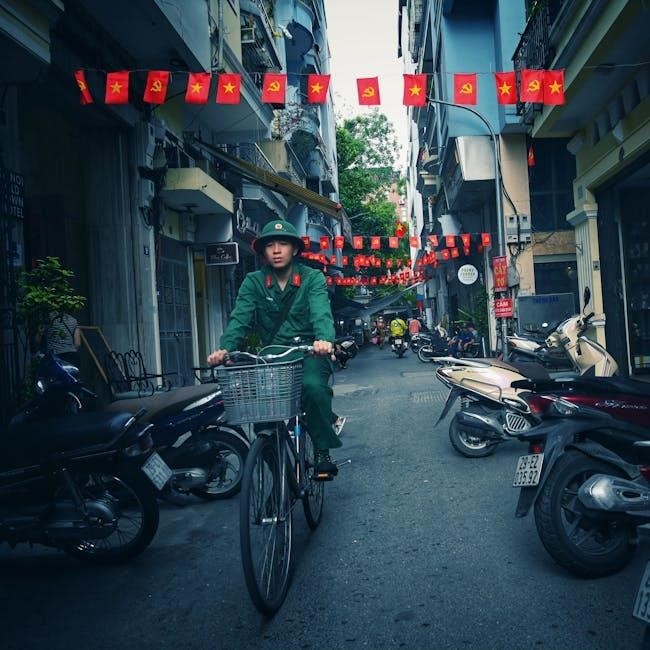
Motorbike Maintenance
Regular motorbike maintenance ensures optimal performance, safety, and longevity. Routine checks include oil changes, tire pressure, brake pads, and chain or belt inspections. A well-maintained bike performs better and reduces accident risks.
5.1 Routine Maintenance Checks
Routine maintenance checks are essential for ensuring your motorbike runs smoothly and safely. Start with the oil and filter, which should be changed every 2,500 to 5,000 miles. Check the tire pressure regularly, as under-inflated tires can lead to poor handling and reduced fuel efficiency. Inspect the brake pads and discs for wear, and replace them if necessary. The chain or belt should be cleaned, lubricated, and properly tensioned to avoid slippage. Additionally, examine the air filter for dirt and replace it if needed, and ensure all lights and indicators are functioning correctly. Regular checks can prevent major repairs and keep your bike in top condition.
5.2 How to Perform Basic Repairs
Performing basic motorbike repairs can save time and money. Start by gathering the necessary tools and consulting your bike’s manual. Common repairs include oil changes, replacing brake pads, and adjusting the chain. For oil changes, drain the old oil, replace the filter, and refill with the recommended type. Brake pads should be replaced when worn thin, ensuring the calipers are clean and properly aligned. Chain adjustments involve tightening or lubricating to maintain optimal tension. Always use a stand to lift the bike for better access. If unsure, consult a professional to avoid further damage. Regular DIY repairs can extend your motorbike’s lifespan and improve performance.
Customizing Your Motorbike
Customizing your motorbike allows you to add a personal touch, enhancing its appearance or performance. Popular modifications include paint jobs, aftermarket exhausts, and ergonomic upgrades for comfort.
6.1 Cosmetic Customization
Cosmetic customization enhances the visual appeal of your motorbike, making it uniquely yours. Riders often personalize their bikes with custom paint jobs, decals, or wraps to reflect their style. Upgrading components like handlebars, mirrors, and levers with chrome or anodized finishes can add a sleek, polished look. LED lighting is another popular choice for both aesthetics and functionality. Seats can be reupholstered or replaced with ergonomic designs for improved comfort and a sporty appearance. Accessories such as tank pads and wheel rim tapes also contribute to a personalized look. These modifications allow riders to express their individuality without altering the bike’s performance.
6.2 Performance Upgrades
Performance upgrades can significantly enhance your motorbike’s speed, agility, and overall riding experience. Common upgrades include aftermarket exhaust systems, which improve power output and reduce weight. High-performance air filters and engine tuning can optimize airflow and increase horsepower. Upgrading the braking system with high-quality discs and pads ensures better stopping power and control. Suspension modifications, such as adjustable forks and shocks, improve handling and stability at high speeds. Lightweight components like aluminum wheels and titanium parts reduce weight, enhancing acceleration and maneuverability. Electronic upgrades, such as ECU tuning, can refine engine performance and responsiveness. These modifications allow riders to tailor their bike’s performance to their riding style and preferences.

Learning to Ride a Motorbike
Learning to ride a motorbike begins with understanding basic controls and balance. Start with a small-engine bike, enroll in a safety course, and practice in a safe area.
7.1 Taking a Motorcycle Safety Course
Enrolling in a motorcycle safety course is a crucial step for new riders. These courses cover essential riding techniques, traffic safety, and hazard awareness. Participants learn how to control their bikes, brake effectively, and navigate challenging road conditions. Many courses include both classroom instruction and hands-on training, ensuring riders gain practical experience. They also focus on developing good riding habits and reducing accident risks. Completing a safety course not only improves riding skills but may also lower insurance costs and satisfy licensing requirements. Experienced instructors provide personalized feedback, helping riders build confidence and competence on the road.
7.2 Obtaining a Motorcycle License
Obtaining a motorcycle license involves meeting specific eligibility criteria and passing required tests. Riders typically must be at least 16 years old, though this varies by jurisdiction. The process often includes a written test on traffic laws, a vision test, and a practical riding assessment. The written test covers road signs, safety rules, and motorcycle-specific regulations. The practical test evaluates balance, braking, and maneuvering skills. Some jurisdictions offer restricted licenses for younger riders or smaller bikes. Studying the motorcycle handbook and practicing riding under supervision can help prepare for the tests. Completing a safety course may also be required or recommended for licensing. Ensure all local requirements are met to obtain the license legally and safely.
Motorbike Insurance
Motorbike insurance protects riders against financial loss from accidents, theft, or damage. Policies typically cover liability, collision, and comprehensive damage, ensuring security and peace of mind on the road.
8.1 Understanding Insurance Coverage
Motorbike insurance provides financial protection against risks like accidents, theft, or damage. Policies typically include liability coverage, which is mandatory in most regions, covering damages to others. Collision coverage pays for repairs to your bike after an accident, while comprehensive coverage addresses non-collision incidents like theft or vandalism. Additional options may include personal injury protection and uninsured/underinsured motorist coverage. Premiums vary based on factors like bike type, riding history, and location; Understanding your coverage ensures you’re prepared for unexpected events and helps you choose the right policy for your needs, providing peace of mind while riding.
8.2 Tips for Lowering Insurance Costs
To reduce motorbike insurance costs, consider the following strategies. Choose a bike with a smaller engine, as lower-powered vehicles often have cheaper premiums. Compare insurance quotes from multiple providers to find the best rates. Opt for a higher deductible to lower your annual payments. Install anti-theft devices, as this can reduce theft-related risks. Complete a motorcycle safety course, which may qualify you for discounts. Maintain a clean driving record, as accidents or violations increase premiums. Avoid unnecessary coverage options, ensuring your policy aligns with your needs. Additionally, some insurers offer discounts for limited mileage or membership in motorcycle associations. These steps can help you save money while staying protected on the road.
Motorbike Accessories
Motorbike accessories enhance safety, comfort, and style. Essentials include helmets, gloves, and knee guards, while tech add-ons like GPS, phone mounts, and heated seats improve riding experiences.
9.1 Essential Accessories for Riders
Essential motorbike accessories prioritize safety, comfort, and practicality. A high-quality helmet is crucial for head protection, while gloves enhance grip and control. Durable jackets and pants with built-in armor safeguard against abrasions. Sturdy boots protect feet and ankles, and knee guards add extra safety. A reliable backpack or panniers provide storage for belongings. A phone mount ensures navigation access, and a USB charger keeps devices powered. Tire pressure gauges and basic toolkits are vital for maintenance. Reflective gear improves visibility, and a first aid kit is a must-have for emergencies. These accessories ensure a safe, comfortable, and enjoyable riding experience for motorbike enthusiasts of all levels.
9.2 Advanced Accessories for Enhanced Riding
Advanced motorbike accessories elevate the riding experience with cutting-edge technology and performance enhancements. GPS navigation systems provide real-time directions and route planning, while Bluetooth communication devices enable seamless connectivity with fellow riders or passengers. High-performance exhaust systems improve engine efficiency and deliver a powerful sound. Heated grips offer comfort during cold weather rides, and adaptive lighting enhances visibility in low-light conditions. Additionally, advanced tire pressure monitoring systems (TPMS) ensure optimal tire performance and safety. For tech enthusiasts, smartphone-integrated dashboards and action cameras allow riders to capture and share their adventures. These accessories cater to experienced riders seeking to enhance both functionality and style, making every journey more enjoyable and efficient.
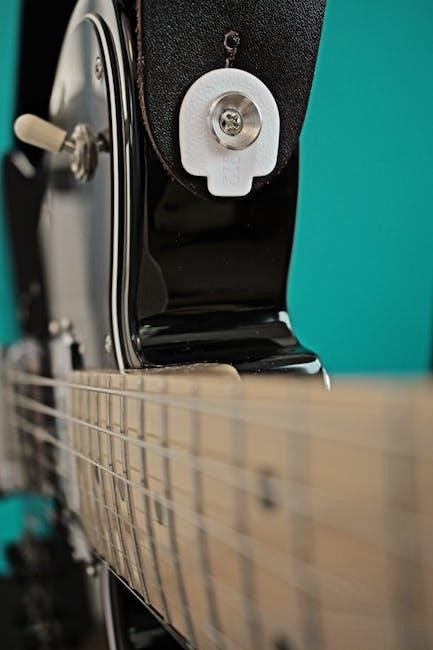
Leave a Reply
You must be logged in to post a comment.